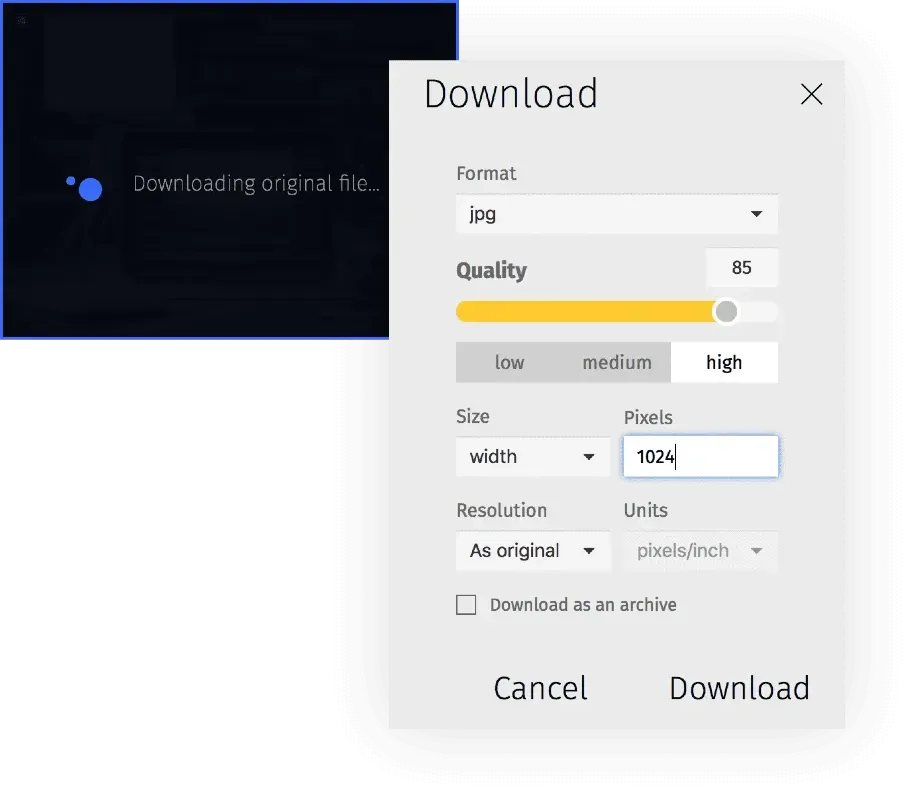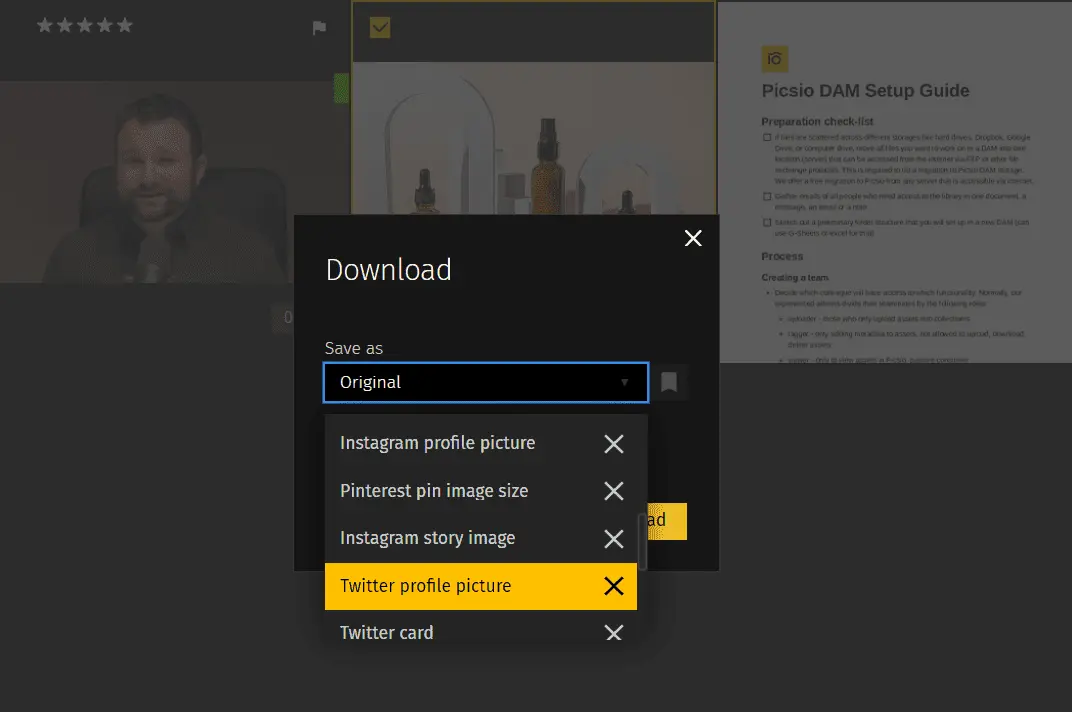In this article, you’ll learn:
Digital assets are all the files you can think of: videos, images, e-books, etc. They aren't just fancy add-ons; digital assets are integral to the storytelling and demonstration of products and services. A well-optimized video or graphic can articulate complex functionalities in a way that words alone may fail to capture. However, as the digital space gets more crowded, the challenge isn't just creating these assets; it's making them findable, usable, and impactful.
Here comes Digital Asset Optimization (DAO) - a focused effort to ensure that digital assets do more than just exist; they perform. Much like traditional SEO, DAO revolves around the use of relevant keywords, strategic file naming, and effective tagging. In this article, we are shedding light on how to do digital asset optimization to make your company/brand products more recognizable and searchable. Read on!
Why Do Digital Asset Optimization
Think about it – what's the use of a brilliantly crafted video if it's buried under the digital clutter, unseen by your target audience? For example, a how-to video titled oisf-=ewdoijvrkn.1 only brings confusion. While the properly-titled video, like How to work with metadata | Pics.io tutorial, adds much more details.
By applying DAO techniques, similar to those used in SEO, you enhance the visibility of these digital assets. For instance, law firms can benefit from collaborating with law firm SEO experts to optimize their digital assets, ensuring that complex legal information is accessible and engaging to potential clients. This specialized approach not only improves search engine rankings but also enhances user engagement and trust. With proper digital asset optimization, when potential clients are searching for solutions you offer, it’s your assets that pop up, your messages that get seen, and your brand that gets noticed.
Here are a few reasons why digital assets play a pivotal role in content marketing and SEO:
- Enhancing User Engagement: Visually appealing images or engaging videos can significantly increase user interaction, leading to higher dwell times and lower bounce rates.
- Improving Content Visibility: Search engines now index and rank digital assets, making them vital for SEO. Optimized images and videos can appear in search results, driving traffic to a website.
- Boosting Brand Recall and Message Conveyance: Well-crafted digital assets can enhance brand recognition and effectively communicate marketing messages, making them integral to a brand’s content strategy.
Key Strategies for Digital Asset Optimization
Strategy 1: Metadata and Tagging
Metadata, in simple terms, is the information about your digital assets. These can be details like file names, descriptions, and keywords. Tagging, on the other hand, involves assigning relevant labels or tags to your assets, making them more discoverable.
Tip #1: Be Descriptive and Precise
We’ve already provided an example of naming video above. The rule of thumb goes as follows: be as detailed as needed to convey the main idea of an asset.
Tip #2: Use Relevant Keywords:
Incorporate keywords that your target audience is likely to use when searching for solutions that your product offers. For instance, if your SaaS product deals with project management, you can use keywords like “project management features” or what is product management” in your metadata.
Tip #3: Consistency is Key:
Maintain consistency in how you tag and describe your assets across various platforms. This uniformity aids in building a cohesive online presence, making your assets more recognizable and traceable.
Imagine a scenario where a potential client is searching for “cloud-based project management solutions.” If your digital assets, like whitepapers or product demos, are aptly tagged and described with these specific terms (including the product name), the likelihood of your content appearing in their search results is significantly higher, thereby increasing your visibility and chances of engagement.
Pics.io digital asset management system can help with all of the above tips. It has advanced metadata and keywords to help you tag, organize, and retrieve all your digital assets conveniently. If you’re dealing with many assets, you can also use AI tagging feature to tag files faster.
Another great tool in Pics.io DAM is custom fields - these are metadata fields that you can adjust based on your company’s needs and insert any information there. Custom fields also make file search much quicker.
Strategy 2: Integrating SEO Best Practices
SEO isn't limited to textual content; it extends to every digital asset your company utilizes. This integration can significantly elevate your assets' visibility and searchability online.
Tip #1: Optimize File Formats and Sizes:
Ensure that your images, videos, and other media files are in web-friendly formats and are compressed for fast loading. For instance, images in WebP format increase page speed load. This not only improves user experience but also positively impacts your SEO rankings.
In Pics.io DAM, it’s possible to change file formats during download, so that you can get the necessary format in seconds. There’s no need to use any additional tools to convert files.

Tip #2: Use Alt Text and Captions:
Alt text for images and captions for videos are crucial. They provide context to search engines about what the asset is about. For instance, an image of your software dashboard should have alt text like “advanced project management dashboard interface,” giving search engines more information to index.
Strategy 3: Leveraging Original and Brand Assets
Originality not only captures attention but also conveys authenticity, helping your company stand out in a sea of competitors who might rely heavily on stock images and generic content.
Some of our tips:
- Utilize high-quality, original photos and videos of your product or service in action. Such an approach builds a stronger connection with your audience by offering a genuine glimpse into your brand.
- Invest in creating brand-specific visuals, such as custom illustrations, infographics, and animations that reflect your brand identity and values.
Digital asset management software also has a solution to keep all these brand assets in order. We’re talking about version control - the feature that saves all file versions and history of changes. Not only that, but you can also compare similar files (both images and videos) using Pics.io file comparison tool.
If you need to make any changes to an asset or simply approve some file version, just use our DAM for this. You can tag teammates in comments and they will receive notifications via Slack or email right away.
For more information on version control feature in Pics.io, check the article below.

Strategy 4: Making Digital Assets Adaptable
No business nowadays can afford to overlook the power of social media platforms. The key to leveraging social media effectively lies in the adaptability of your digital assets. Assets that can be easily modified and optimized for various social media platforms ensure consistent engagement and broaden your reach.
Each social media platform has its unique set of requirements and audience preferences. An Instagram post, for example, demands high-quality visuals in a square format, whereas LinkedIn content might prioritize informative graphics and longer, more professional captions. All these adjustments take time, especially if you’re working with a few different platforms.
Pics.io DAM can save this time for you. Our digital asset management solution has presets for different social media that you can choose from right when downloading assets. That is, you don’t need to manually crop images for Instagram and TikTok, for instance. Pics.io also has basic editing tools if you need to make adjustments to your creative materials.

Strategy 5: Regular Audits, Updates, and Performance Tracking
The digital world is not static, and neither should be your digital assets. Regular audits and updates are vital to ensure that your content remains relevant, engaging, and in line with the latest SEO practices. This strategy involves periodically reviewing your digital assets to assess their performance and relevance.
Periodic Reviews are the way to go here. Establish a routine, whether quarterly or bi-annually, to evaluate the effectiveness of your digital assets. This includes checking for outdated information (including keywords in alt texts), broken links, and relevance to current market trends.
When it comes to digital assets’ performance, analytics play a crucial role. It shows how potential clients engage with different files and how this impacts sales and conversions. Keep an eye on key performance indicators such as views, clicks, shares, and conversion rates.For those exploring various analytics tools, there are many options like Databox that can assist in tracking these key metrics across platforms. These metrics offer insights into what types of assets resonate most with your audience.
For instance, analytics might reveal that infographics posted on LinkedIn drive more engagement than on other platforms. This insight allows a company to focus on creating more high-quality infographics tailored for LinkedIn for maximum impact rather than spending time and money on creating TikTok videos that don’t bring the same results.
Conclusion
Digital asset optimization is a strategic approach that breathes life into your videos, images, e-books, etc., transforming them from static files into dynamic tools of engagement. It encapsulates a holistic approach to digital marketing. It's about making your assets work harder for you, ensuring they're not just seen but remembered. The key to visibility and engagement lies not in the creation of content alone but in its thoughtful optimization.
Did you enjoy this article? Give Pics.io a try — or book a demo with us, and we'll be happy to answer any of your questions.





